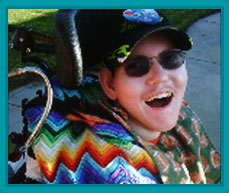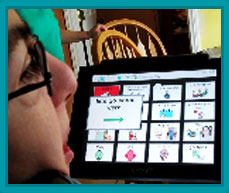DTS offers evaluations to help determine if your child or colleague has reading and/or writing deficiencies'. Only after a language-learning evaluation can DTS help you to develop a strategy to improve in these areas.
Dynamic Therapy Solutions endorses a multi sensory program known as the Wilson Reading Program. It is based on the Orton-Gillingham philosophy and principles as well as current reading research.
This program teaches students the structure of words and language through a multi sensory 12-step program. Wilson specifically teaches strategies for decoding and spelling while including both oral expressive language development and comprehension.
Yes, however be cautious of any reading program that promises "miracle cures" in a few hours. A good reading program should use a multisensory approach and include the following components:
Augmentative Alternative Communication is any device system or method that improves the ability of an individual with communication impairments to communicate effectively. AAC is not a substitute for how the individual is currently communicating. It is used to augment that communication and replaces the elements that are unintelligible.
Types of AAC:

The first step is to schedule a speech-language evaluation with a speech-language therapist who specializes in AAC.
Assistive technology is any item, piece of equipment, or system that helps individuals work around or compensate for learning difficulties.
Examples of Assistive Technology:

Definition:
Dyslexia is a type of learning disability. It is a general term that refers to a variety of problems with oral and written language. The word dyslexia comes from the
Greek words "dys" meaning poor or inadequate and "lexia" meaning verbal language. So dyslexia means poor or inadequate language.
Contact Dynamic Therapy Solutions for resources and information on an evaluation and intervention.